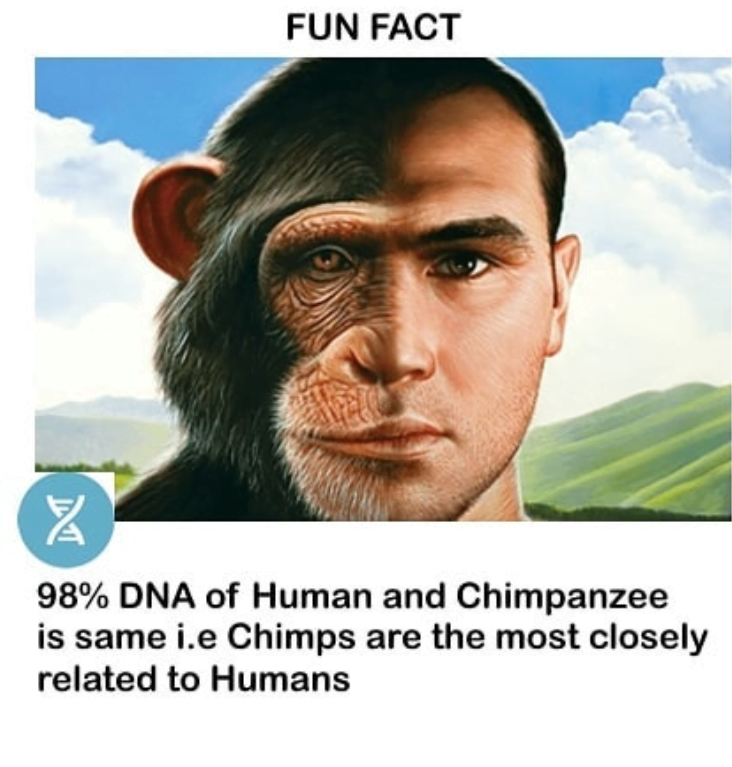Let’s embark on a journey through the realm of biology, uncovering fascinating facts about biology, unveiling the wonders of life, and inspiring a sense of awe for the intricate mechanisms that shape our existence.
What Is Biology?
The field of biology encompasses the scientific exploration of life and the intricacies of living organisms. It encompasses a wide range of disciplines that investigate the structure, function, growth, evolution, and distribution of living organisms, as well as their interactions with each other and their environment. Biologists study everything from the smallest microorganisms to complex ecosystems and the biosphere as a whole.
The field of biology explores various aspects of life, including the organization and hierarchy of biological systems, such as cells, tissues, organs, and organ systems. It investigates the mechanisms of life processes, such as metabolism, reproduction, growth, and development. Additionally, biologists examine the diversity and classification of living organisms, from bacteria and fungi to plants and animals, and explore how they have evolved over time.
Biology also investigates the interactions between organisms and their environment, including ecological relationships, adaptation to different habitats, and the impact of environmental factors on living organisms. This includes studying topics like population dynamics, community ecology, and the conservation of biodiversity.
Amazing Facts About Biology
Here are some amazing facts about biology:
- Biotechnology, unlike molecular biology, involves intervening in organisms to solve problems, particularly by manipulating genes or DNA to produce desired outcomes. It harnesses biological processes for industrial and other important purposes, such as using microorganisms to produce antibiotics and hormones.
- Paleontology is the scientific study of fossils, exploring life forms that existed in the past or during their lifetimes. Paleontological observations date back as early as the 5th century BC. The term “paleontology” originates from the Greek word “Palaios,” meaning “old” or “ancient.”
- Biology focuses on the study of life, while geology examines solid features of the Earth. Paleontology lies at the border of biology and geology, bridging the two disciplines. Geology also explains the Earth’s surface structure and the processes that have shaped it, including determining the relative or absolute ages of rocks and their history.
- The term “Biology” derives from the Ancient Greek word “Bíos,” meaning “Life.” “Logía” translates to “branch of study” or “to speak.” The combined word “Biología” is used today, although the complete term “Biología” or “βιολογία” cannot be found in Ancient Greek. It was subsequently adapted by the French and English languages.
- Ancient civilizations, including China, Mesopotamia, Egypt, and the Indian subcontinent, pursued the study of “natural philosophy,” which explored general questions about reason, existence, knowledge, values, language, mind, and nature. Natural philosophy served as the primary source of knowledge before the emergence of modern science.
- Scholars of the medieval Islamic world made significant contributions to the study of medicine, drawing upon the traditions of Greek philosophers. Renowned scholars like Al-Jahiz, Al-Dīnawarī, and Rhazes specialized in medical research during this period of cultural, economic, and scientific advancement in Islamic history.
15 Fun Facts About Biology
- The acceleration of a flea surpasses that of the Space Shuttle.
- The average human body contains enough iron to make a small nail.
- The Great Barrier Reef, composed of billions of tiny organisms called coral polyps, holds the distinction of being the largest living structure on Earth.
- A single human brain generates more electrical impulses in a day than all the telephones in the world combined.
- The world’s smallest flowering plant is the Wolffia, also known as the watermeal. It is about the size of a grain of rice.
- Giraffes have the same number of neck vertebrae as humans – seven – but each vertebra can be over 10 inches long!
- The tongue, in proportion to its size, holds the title of the strongest muscle in the human body.
- Koalas have unique fingerprints, just like humans.
- A honeybee can flap its wings up to 200 times per second.
- The muscles that control your eyes are the most active muscles in your body and are constantly moving.
- The world’s largest flower is the Rafflesia arnoldii, which can grow up to three feet in diameter.
- The tongue of a blue whale can weigh as much as an elephant.
- The cheetah is the fastest land animal and can accelerate from 0 to 60 miles per hour in just a few seconds.
- The color of a flamingo’s feathers comes from the pigments in the food they eat, such as shrimp and algae.
- Marine plants, particularly phytoplankton in the ocean, produce the majority of the oxygen we breathe.

Image Source: Instagram @biologyfactz
Interesting Biology Facts
- Antonie van Leeuwenhoek, a self-taught Dutch businessman, and scientist during the Golden Age of Dutch science and technology, played a crucial role in the field of microscopy. His pioneering work contributed to the establishment of microbiology, earning him the title of “Father of Microbiology.” Van Leeuwenhoek was the first person to observe live cells using a microscope.
- The field of biology underwent a revolutionary transformation with the advent of the microscope. Enabling the visualization of objects too small to see by the naked eye allowed scholars, scientists, and researchers to discover bacteria, infusoria, and spermatozoa.
- While there is no official inventor of the microscope, historians credit Zacharias Janssen, a native of The Hague, Netherlands, with its invention. Janssen also invented the first optical telescope.
- In 1735, Carl Linnaeus published a foundational taxonomy for the natural world, greatly aiding scholars. Taxonomy plays a vital role in organizing organisms and facilitating effective communication of biological information and classification. Linnaeus, an expert in not only taxonomy but also botany and zoology, made significant contributions to these fields.
- Aristotle, born in Stagira, Chalcide in Macedonia (now northern Greece) in 384 BC, is widely regarded as the first biologist in the Western tradition. He classified living things into categories such as animals, plants, etc. and further categorized them based on characteristics like the presence or absence of blood.
- There are six types of white blood cells: neutrophils, which constitute 58% of our blood; monocytes and lymphocytes, each comprising 4% of our blood; bands, making up 3% of our blood; eosinophils, accounting for 2% of our blood; and basophils, representing 1% of our blood.

Image Source: Instagram @facts_biological
READ ALSO: Facts About Technology | Facts That Point To The Future
Facts You Need To Know
- Hippocrates, born in Ancient Greece in 460 BC, is often referred to as the “Father of Western Medicine.” He was the first to explain various diseases through natural causes rather than attributing them to superstitions or gods. Hippocrates meticulously described numerous diseases and their treatments based on detailed observations.
- Various bacteria, such as Salmonella, Escherichia coli (E. coli), and Shigella, among others, can cause illness in humans. However, not all bacteria are harmful. Some bacteria, known as probiotics, have positive effects on the human body. For example, foods like yogurt contain probiotics that can help prevent digestive problems. People often refer to probiotics as ‘good’ bacteria because they contribute to maintaining a healthy body system.
- The common cold is a viral infectious disease that affects the upper respiratory tract. It primarily targets the nose, sinuses, and throat, leading to symptoms such as coughing, sore throat, runny nose, headache, and fever. Rhinovirus is the most common culprit, but there are over 200 different viruses that can cause a common cold.
- Molds, yeasts, and mushrooms, despite their distinct tastes, belong to the fungus kingdom. Fungi are eukaryotic organisms and do not fall under the plant or animal kingdoms. Instead, they have a kingdom of their own.
- In 1969, scientists proposed to classify fungi as a separate kingdom within a new five-kingdom system.. The five kingdoms are Animalia (animals), Plantae (plants), Fungi, Protista (algae, amoebas, euglena, etc.), and Monera (bacteria).
- Bacteria, unlike other organisms, consist of a single cell, making their structure relatively simple. The cells of bacteria are significantly smaller and less complex compared to other cell types.
- While modern biology has developed recently and advanced significantly, ancient civilizations in Mesopotamia. Egypt, the Indian subcontinent, and ancient China applied biological knowledge in their societies since ancient times.










